The archaeological site of Pañamarca in north-central Peru may have been under excavation for 70 years, but it continues to bear discoveries which shed light on the rituals and customs of the Moche, a civilization that flourished between the 1st and 8th centuries.
More recently, archaeologists discovered a pair of 1,400-year-old wall paintings depicting two-faced men on a pillar in a ceremonial hall. Besides their dynamism and remarkable preservation, the murals are hailed as a singular find in South American archeology for their depiction of movement and the simultaneous telling of two stories.
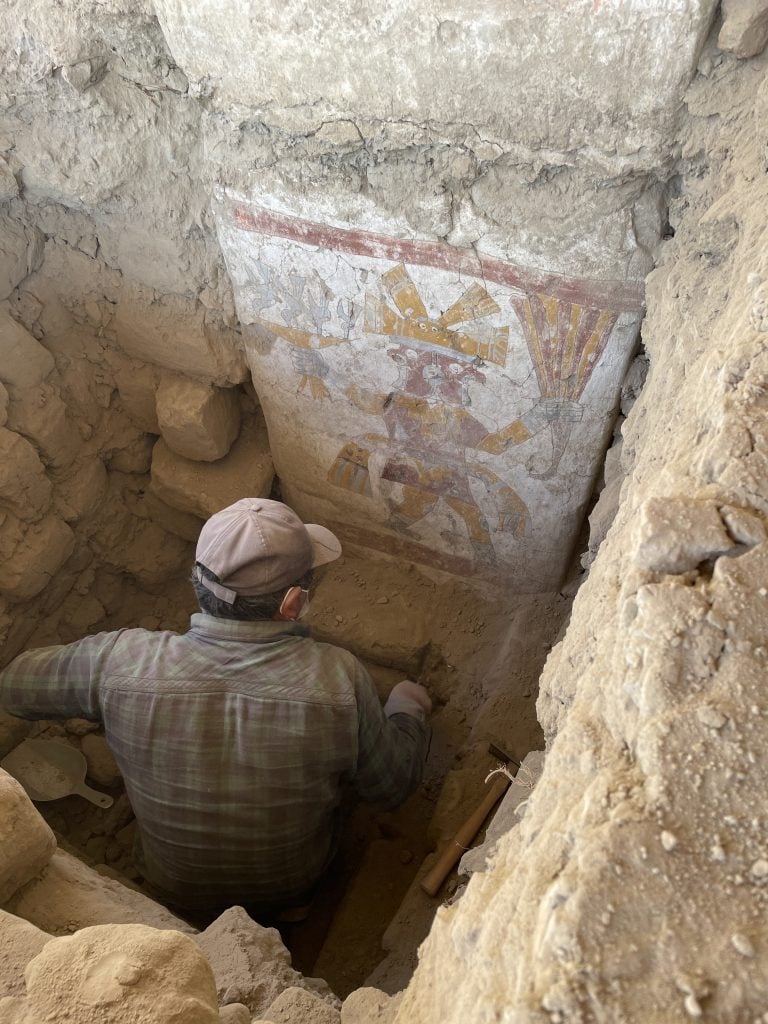
Manuel González Olacua, Archeology and Conservation Field Assistant, excavates the mural. Photo: Lisa Trever.
“These murals are beautiful windows into our past,” said Jessica Ortiz Zevallos, the Peruvian head of the Archaeological research project. “We add significantly to the work that provides insight into the perspectives and priorities of people who have walked this landscape before us.”
One of these priorities, as the murals suggest, was to accurately depict religious practices and their connection to the supernatural. On the top of the pillar, the two-faced man is crowned by the sun and holds a striped fan in one hand and a goblet with four swooping hummingbirds in the other. On the lower part of the pillar, the two-faced man also holds a fan and a partially preserved stick.
While Moche art typically depicts deities with supernatural elements such as fangs or wings, said Lisa Trever, professor of pre-Columbian art history and archeology at Columbia University, “the one- this, with the exception of the two faces, seems entirely human”.
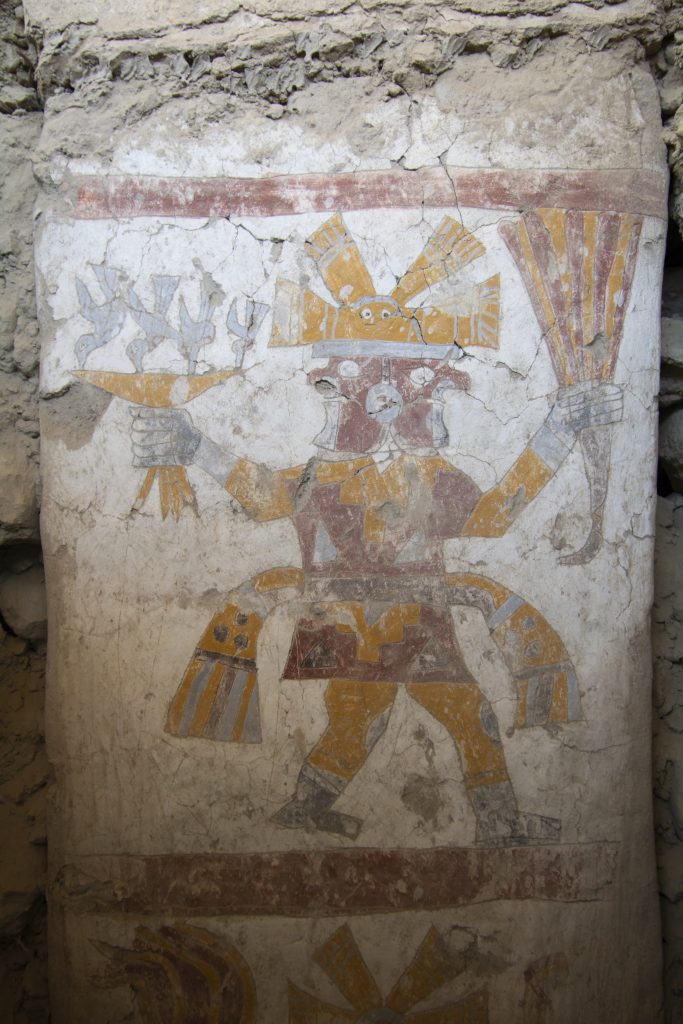
The upper figure painted on the pillar. Photo: Lisa Trever.
The discovery took place in the pillared hall of Pañamarca, which was first excavated and documented in 2010 and has an unusually high density of wall paintings. This fact, in addition to the narrowness of the passages, led archaeologists to believe that the hall was a space reserved for important leaders or elders of the community.
Pañamarca, an architectural complex resting on an outcrop in Peru’s Nepeña Valley, is believed to have been developed by the Moche between 550 and 800 CE. To date, less than 10% of the wall paintings at the site have been discovered. The Archaeological Research Project is a team of international female-led archaeologists involving local researchers as well as those from Columbia University and the Denver Museum of Nature & Science.
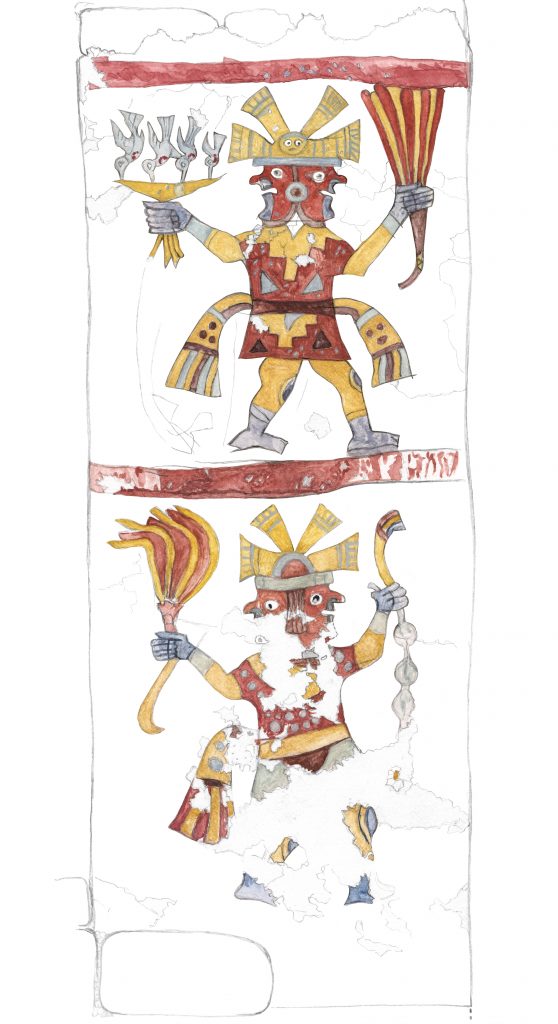
A pencil and watercolor illustration of the pillar by artist-archaeologist Pedro Neciosup Gómez.
“Our project has the potential to usher in a new era of understanding and appreciation for lousy art,” Trever added.
The team will return to the site in the summer of 2023 and continue excavations of the hall, in addition to building a digital collection of photographs and virtual reality assets, many of which will be made public.
See more images from the excavation below.
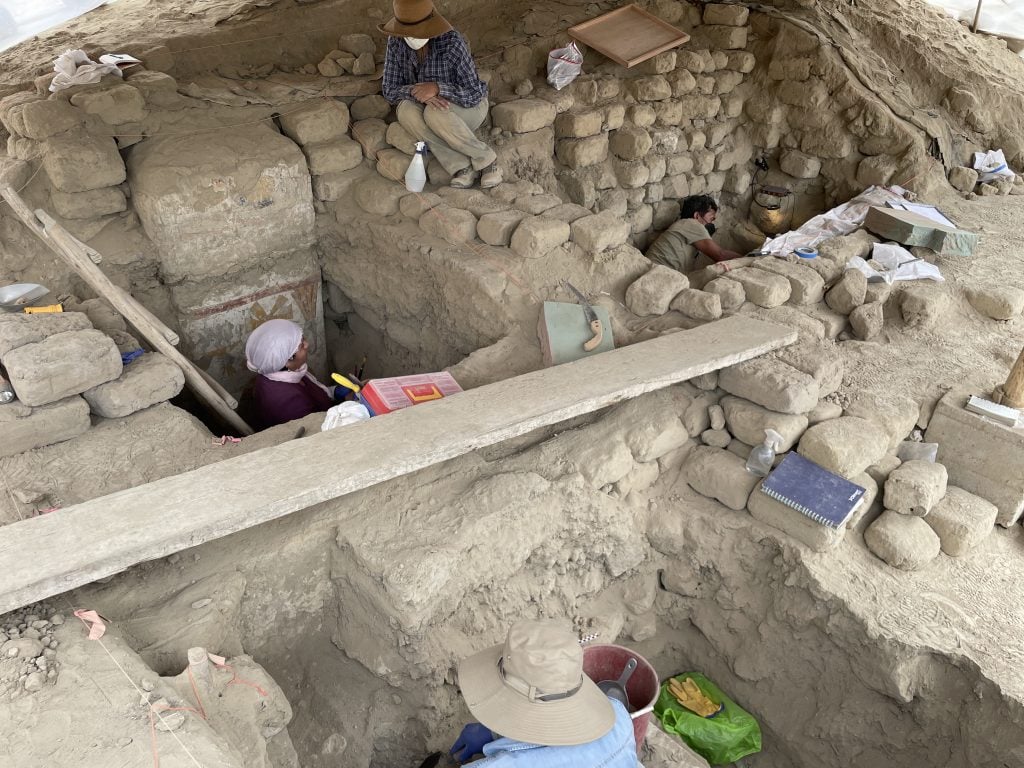
The team at work in the study, documentation and conservation of painted architecture. Photo: Lisa Trever.
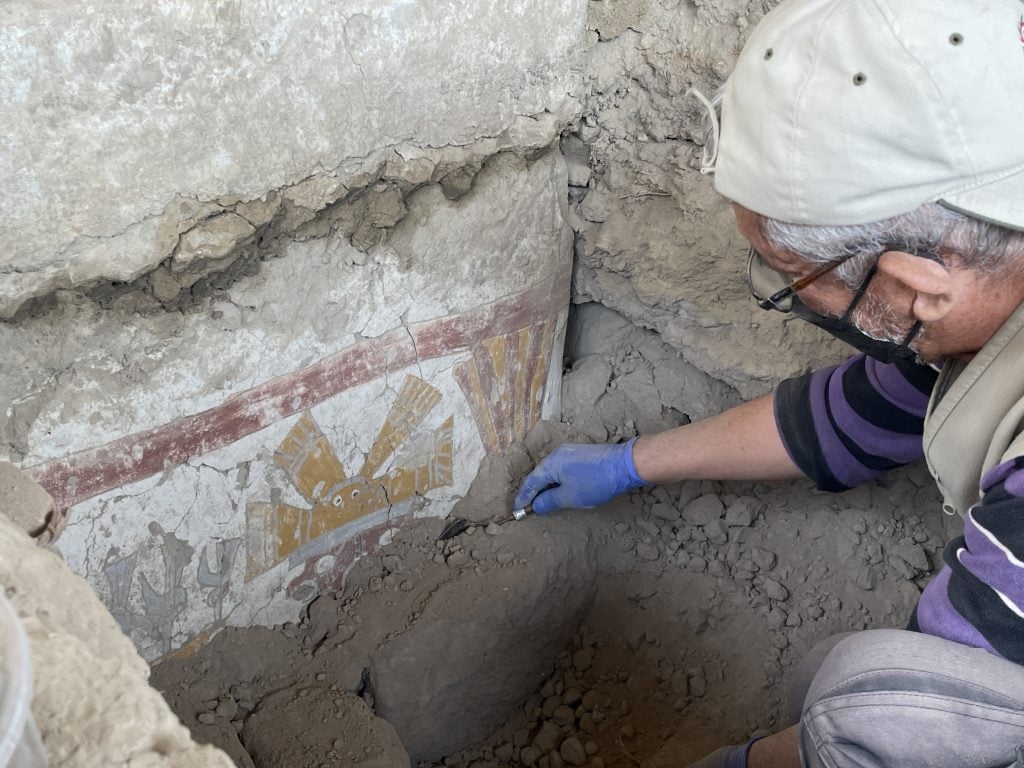
Restorer Rafael Gordillo Méndez reveals the painted surface of the pillar. Photo: Lisa Trever.

Archaeologist-artist Pedro Neciosup Gómez creates a measured design of the painted pillar. Photo: Lisa Trever.
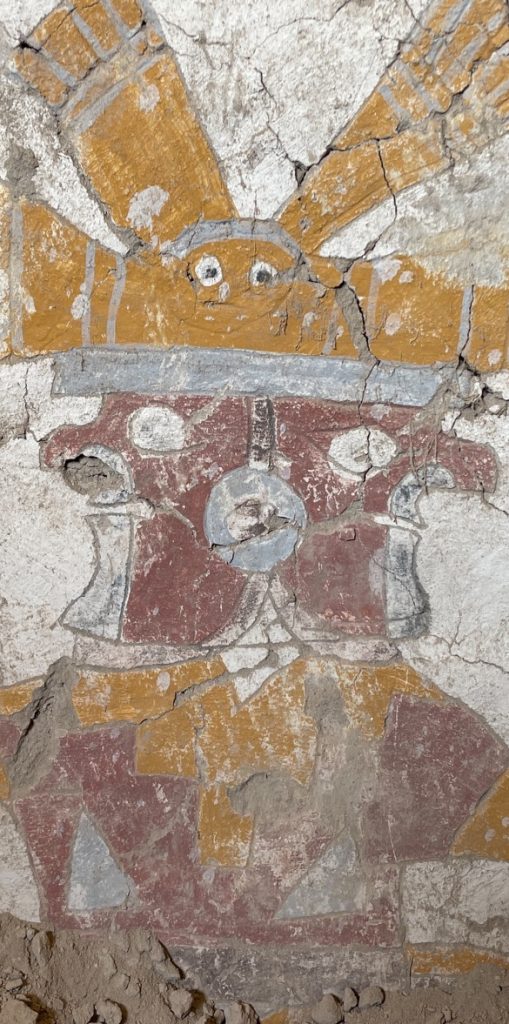
Detail of the unusual double-faced character painted on the pillar during its excavation. Photo: Lisa Trever.
Follow Artnet News on Facebook:
Want to stay one step ahead of the art world? Subscribe to our newsletter to receive breaking news, revealing interviews and incisive reviews that move the conversation forward.
